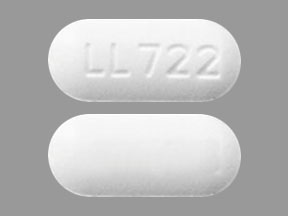Allzital Interactions
There are 651 drugs known to interact with Allzital (acetaminophen/butalbital), along with 14 disease interactions, and 2 alcohol/food interactions. Of the total drug interactions, 43 are major, 562 are moderate, and 46 are minor.
- View all 651 medications that may interact with Allzital
- View Allzital alcohol/food interactions (2)
- View Allzital disease interactions (14)
Most frequently checked interactions
View interaction reports for Allzital (acetaminophen / butalbital) and the medicines listed below.
- Abreva (docosanol topical)
- Actigall (ursodiol)
- Advair Diskus (fluticasone / salmeterol)
- albuterol
- amphetamine / dextroamphetamine
- Animal Shape Vitamins (multivitamin)
- Aquaphor (emollients topical)
- atorvastatin
- atovaquone / proguanil
- baclofen
- Belbuca (buprenorphine)
- betamethasone topical
- buprenorphine
- buspirone
- butalbital
- Butrans (buprenorphine)
- cannabis
- carisoprodol
- Celebrex (celecoxib)
- celecoxib
- cetirizine
- clonidine
- Compazine (prochlorperazine)
- Concerta (methylphenidate)
- doxycycline
- duloxetine
- gabapentin
- modafinil
- pantoprazole
- Vitamin D3 (cholecalciferol)
Allzital alcohol/food interactions
There are 2 alcohol/food interactions with Allzital (acetaminophen / butalbital).
Allzital disease interactions
There are 14 disease interactions with Allzital (acetaminophen / butalbital) which include:
- alcoholism
- liver disease
- acute alcohol intoxication
- drug dependence
- liver disease
- porphyria
- rash
- respiratory depression
- PKU
- adrenal insufficiency
- depression
- hematologic toxicity
- osteomalacia
- paradoxical reactions
More about Allzital (acetaminophen / butalbital)
- Allzital consumer information
- Compare alternatives
- Pricing & coupons
- Drug images
- Side effects
- Dosage information
- During pregnancy
- Drug class: analgesic combinations
- En español
Related treatment guides
Drug Interaction Classification
| Highly clinically significant. Avoid combinations; the risk of the interaction outweighs the benefit. | |
| Moderately clinically significant. Usually avoid combinations; use it only under special circumstances. | |
| Minimally clinically significant. Minimize risk; assess risk and consider an alternative drug, take steps to circumvent the interaction risk and/or institute a monitoring plan. | |
| No interaction information available. |
See also:
Further information
Always consult your healthcare provider to ensure the information displayed on this page applies to your personal circumstances.


